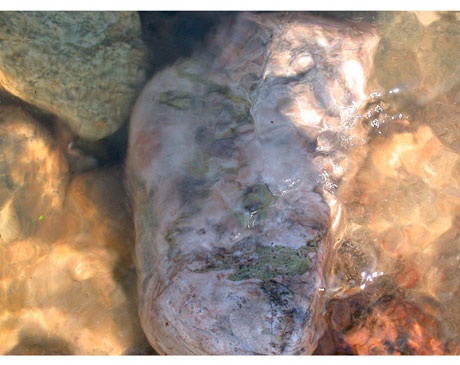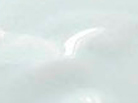A Dozen Or So Koans On (Non)Existence — ‘Show me your original face before you were born’

Artists:
Mirosław Bałka
Sławomir Brzoska
Marta Deskur
Wojciech Gilewicz
Izabella Gustowska
Piotr Kurka
Konrad Kuzyszyn
Dominik Lejman
Wojciech Łazarczyk
Agata Michowska
Hanna Nowicka
Grażyna Tereszkiewicz & Roman Lewandowski
Edyta Wolska
Maria Wrońska

catalogue ‘A Dozen Or So Koans On (Non)Existence’ The catalogue presents the documentation of the exhibition entitled ‘A Dozen Or So Koans On (Non)Existence’, featuring works by the following...

The exhibition project A Dozen Or So Koans On (Non)Existence consists of a wall installation which includes 15 light boxes and a neon light. The leitmotif of the exhibition is a famous Japanese koan: Show me your original face before you were born. Every artist that was to be invited to take part in the project was given a task consisting in an attempt of standing up to and interpreting that koan. The photographs which will be presented in the form of little light boxes are the effect and visual materialisation of that attempt. The lighted photographs will create a kind of a wall installation which will be accompanied by the text of the koan shown in the form of a neon light.
The project of the exhibition is not a reflection on Far East thinking, but first of all it refers to the issues of the crisis of subjectivity and identity that are represented by the image of person in the culture of the West. The interpretation of the koan is therefore to be an attempt of finding our image or its absolute substance beyond the earthly and temporal, that is beyond the birth and death. At the same time our purpose is an attempt of redefinition of the contemporary work of art as a structure of similarly unstable, ambiguous and processual contours like the figure of identity and subject. Hence the comparison between a contemporary work of art and a koan, a construction which refers, in fact, to what’s almost incommunicable verbally and linguistically, even though it uses the existing notions and grammar.
Today the problem of the undermined notions of subject and identity is considered fundamental for the western liberal arts or the humanities. The impasse of the subjectivity — described by literature and imagined by visual and performative arts in the categories of conventionality, death or the illusory character of an author — is being continuously announced, declared or contested. Many literary works and visual representations have become the illustration of this process.
The authors of the project define the contemporary artwork as a structure which has similarly unstable and ambiguous contours, just like the figure of identity. Therefore today we can compare a work of art — like Irena Rychlowska did it once — to a koan, a construction which refers, in fact, to what’s almost incommunicable verbally and linguistically, even though it uses the existing notions and grammar.
From the point of view of etymology a koan [kung'-an or gong'an (Chinese)] means exactly a document, a statement or announcement. It’s a kind of riddle or question in a paradoxical form, the answer to which shouldn’t be looked for in any rational way, but with the use of intuition and spontaneity. The beginnings of its use come from the times of the T'ang dynasty, when it served to meditation purposes. One of the first koans that have been given to the students is the original face, authored by the Sixth patriarch, Ch'an Hui Nenga. The Monk Mayo asked this question of the Sixth patriarch, What is Zen?, and the Patriarch replied that, ‘when your mind is not dwelling on the dualism of good and evil, what is your original face before you were born?’ The right answer was allegedly to be three pounds of flax… Obviously, the answer is not the one and only, since each time working with a koan requires another ‘training’, determines another king of ‘path’, and brings another kind of (non)conclusion. A koan — just like a work of art — rejects the dictatorship of the sense, taking it into the parentheses.
Generally speaking, working on a koan, we should create a state of the mind, in which there is no place for any discoursive or alternative thinking. The practice of meditation — contrary to the convictions which are widely-held in our culture — is not a kind of reflection and critical thinking, but rather an attempt of breaking with thinking and rejecting all the pros and cons. It is an affirmative entering into the mind and keeping it in the state of complete attentiveness. In other words, it tends to eliminate all divisions in the dialectical assessment of reality (beautiful/ugly, good/bad, etc.). Thanks to it one can find a dimension in which the world appears to be such as it is — beyond all divisions, and beyond the life and death. This state, a kind of insight can be metaphorically and paradoxically defined as seeing our own face before our birth…
Practising and solving a koan has many common elements with originating and creating an artistic work which many a time is very resistive to interpretation. Many a time the fact that the critics and the viewers try to concretise the ambiguity of a work and its underdetermined places on the basis of accessible tools and methodology causes misunderstandings. It is so because they try to grasp the logos of a work and its raison d'être in the purely discoursive categories. And we know that each kind of art draws firstly from feelings, emotions and intuition; it’s only then that the can get an ideological dimension. Similar things concern all the artistic practices and, obviously, the whole culture understood as a unity. Meanwhile, valuating every work or phenomenon, we should be aware that all the questions on the condition and status of art, and a work of art in particular, what includes also all the statements about their alleged crisis, are de facto the questions about the status of sense and the shape of identity… And the sense — just like the figure of identity — is a conceptual product, a rhetoric figure entangled in the determinants of time and space.
We mustn’t forget that these determinants are instable and of transitory character. In spite of their changeability and ephemeral character, art has always been eagerly portraying God, an idol or a man at least from the times of the famous dispute between the supporters of idolatry and iconoclasm. Moreover, human face has been considered a synonym of the ‘person’ or psyche from the first metaphorical photography which in the culture of the West was the Veraicon, through the discoveries of daguerreotype and photography, and later the video technology. The projection of a human face onto an image reveals, however, the relativity and conventionality of the figure and its personality, as well as its carnality and identity, which — in the culture of the Far East — have always been considered the symptoms and metaphors of the substantial Unity.
Curators: Grażyna Tereszkiewicz & Roman Lewandowski






